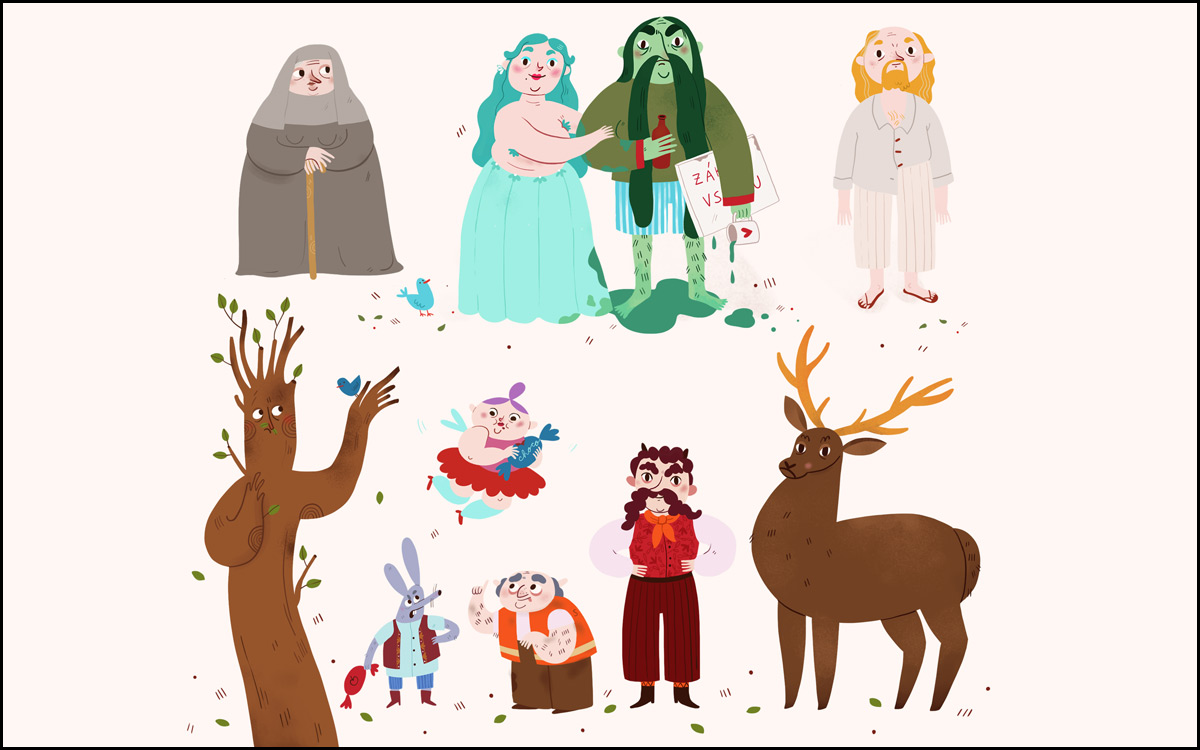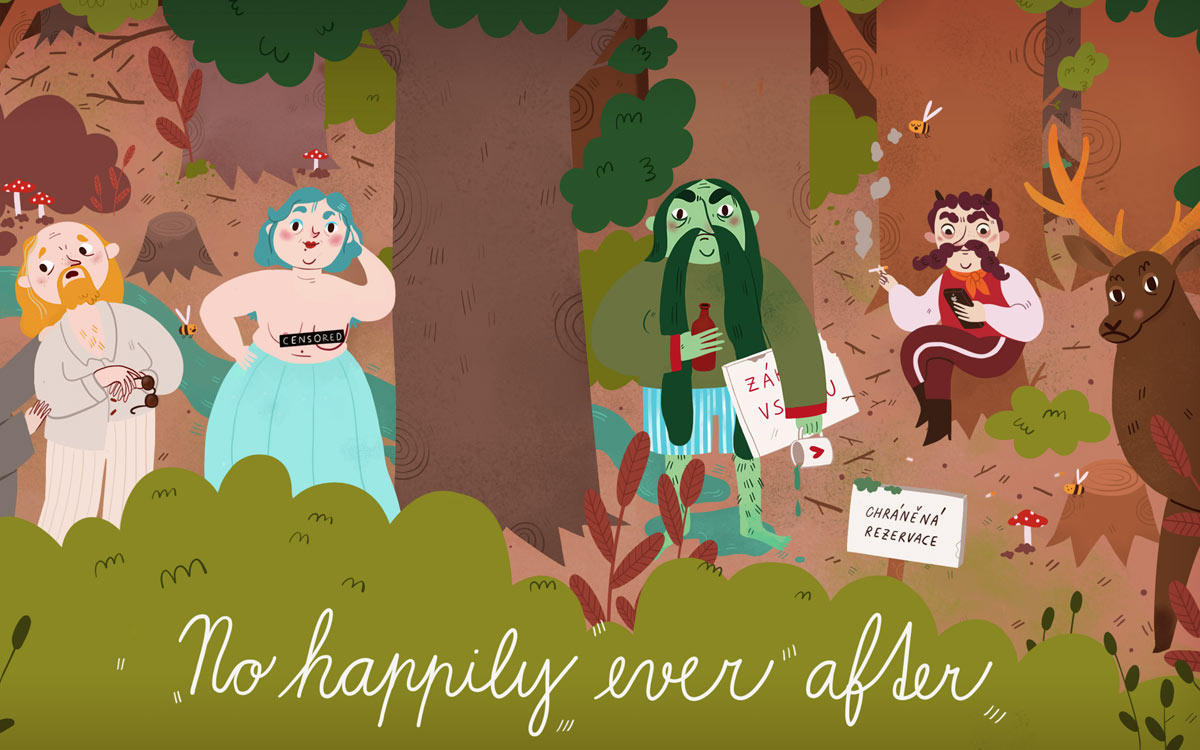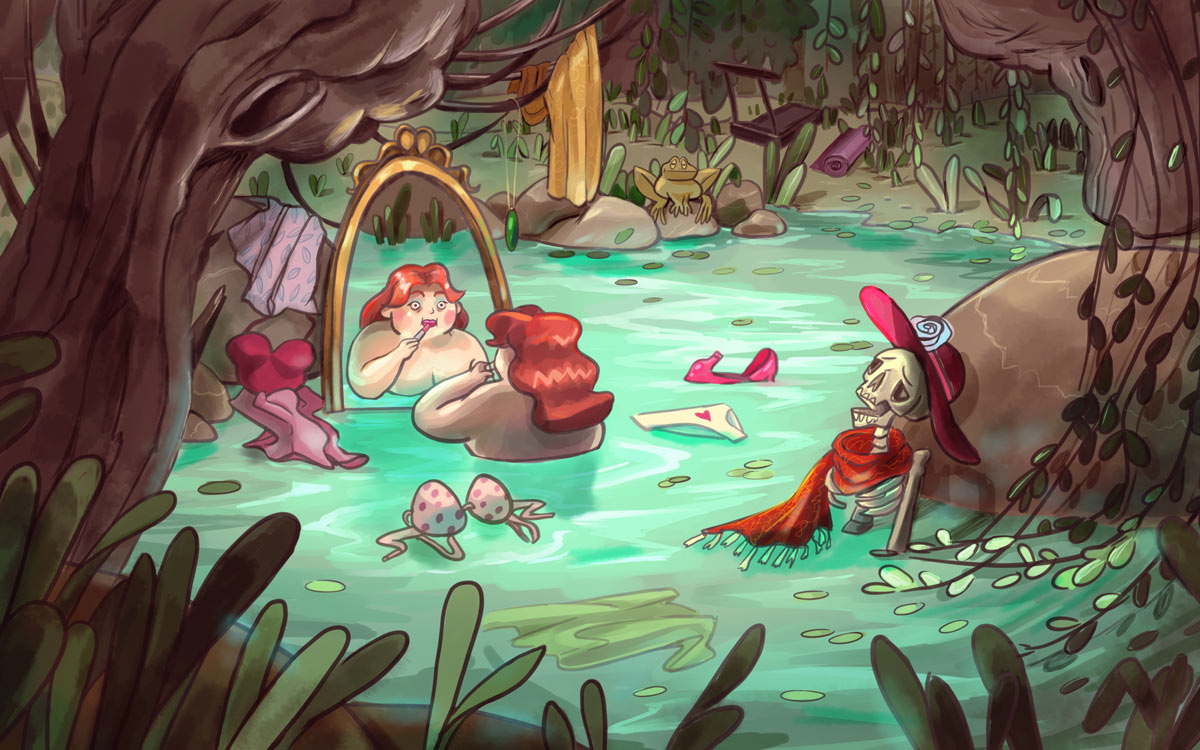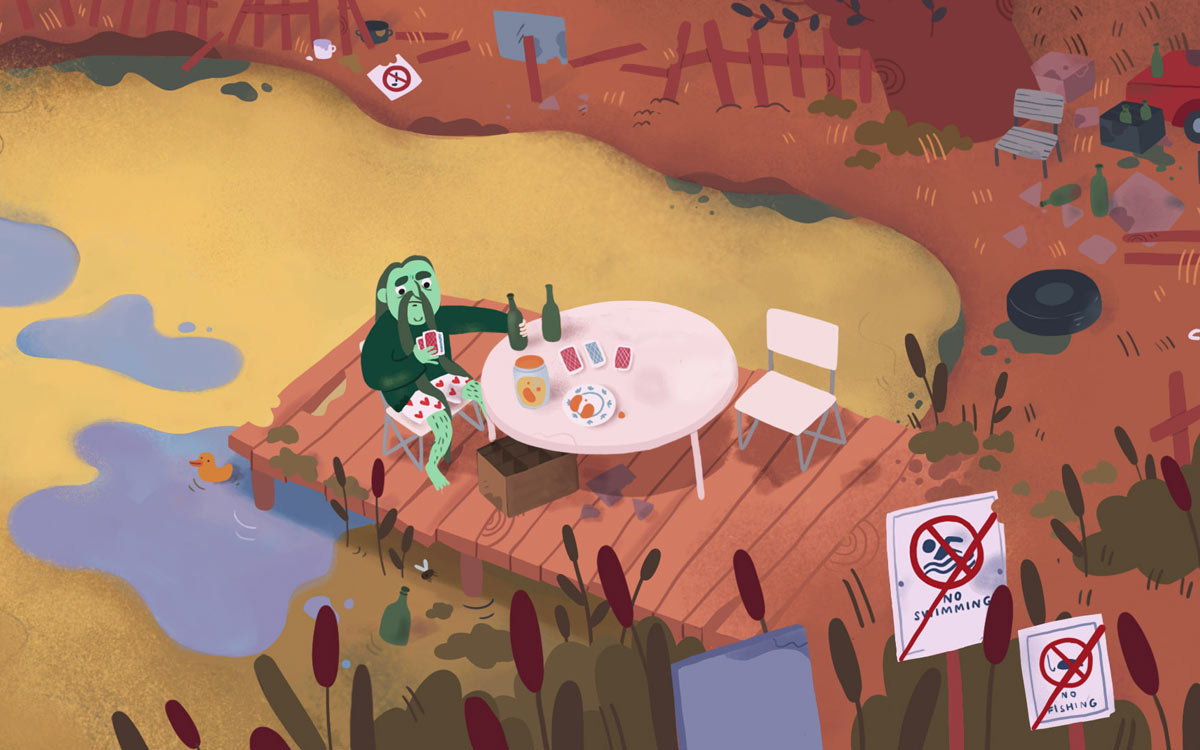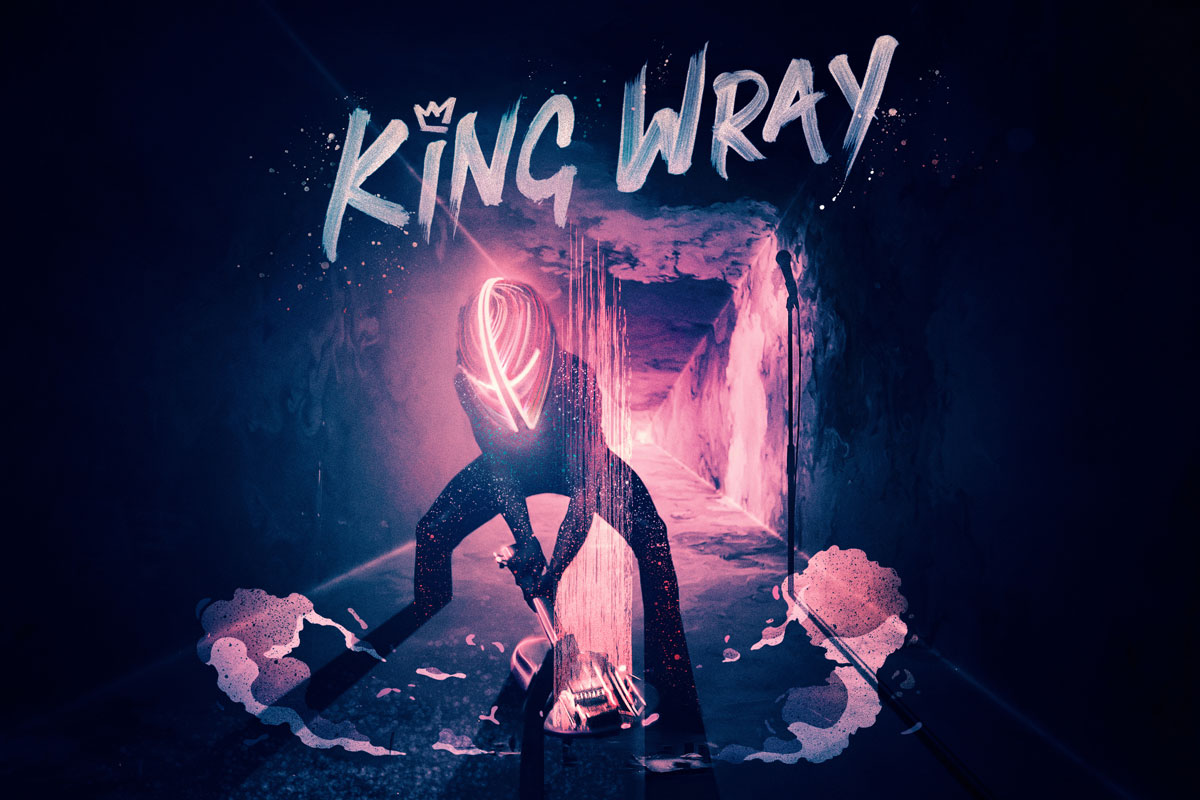“No Happily Ever After”
Synopsis
No Happily Ever After is a stop-motion mockumentary insight into nowadays’ lives and troubles of mythical creatures from the old fairy tales. Each episode follows a creature from a different European country as the crew of fictional documentarists led by director Hans Andersen Jr. scouts their natural habitat to find new interesting subjects they can interview. They try to capture the unique ways in which they each struggle to fulfil their original purposes after the world around them has changed so much. The series is both comedy as well as educational series introducing traditional culture in the form of fairy tales.
No Happily Ever After
Directors: Gabriela Plačková and Alžběta Göbelová
Producer: Mária Môťovská
Production company: Helium film
Format: 12 x 10’
Target audience: 10+
Technique: Stop-motion
No Happily Ever After is a unique stop-motion animation series project that attracted us at CEE Animation Forum 2020. It is a fictional documentary series, with a comedic touch, of famous mythical characters from old fairy-tales across Europe.
Here, we would like to share with you our interview with the directors Gabriela Plačková and Alžběta Göbelová on the project, currently in an early stage, with some visual materials.
Interview with Gabriela Plačková and Alžběta Göbelová
Hideki Nagaishi (HN): Could you please let us know the key points of your animation series project that you would like to appeal to the prospective audience?
Gabriela Plačková: We definitely plan on making a comedy series, and we primarily want the audience to laugh and enjoy while watching, so humour is a key element in the whole thing.
Secondly, the main protagonists are fairy-tale characters from different European countries, which gives us the opportunity to explore and introduce cultural backgrounds of different nations. And, of course, make fun of it in the process. We want to take each national mythology, introduce it to the viewer and then twist it and play with it. Since the series is based in the 21st century, we can put the fairy-tale characters into new situations and context.
Furthermore, we want to work with the stereotypical characteristics of different countries, what the nations are known for amongst others, and give it a piece of that element as well.
It will all be designed as a very modern and likeable stop-motion, shot in the form of a fictional documentary. With the main lead of the series, a documentarist Hans Andersen Jr., a descendant of a famous fairy-tale writer, we travel across Europe and see each of the old fairy-tale mythologies being replaced with a new one.
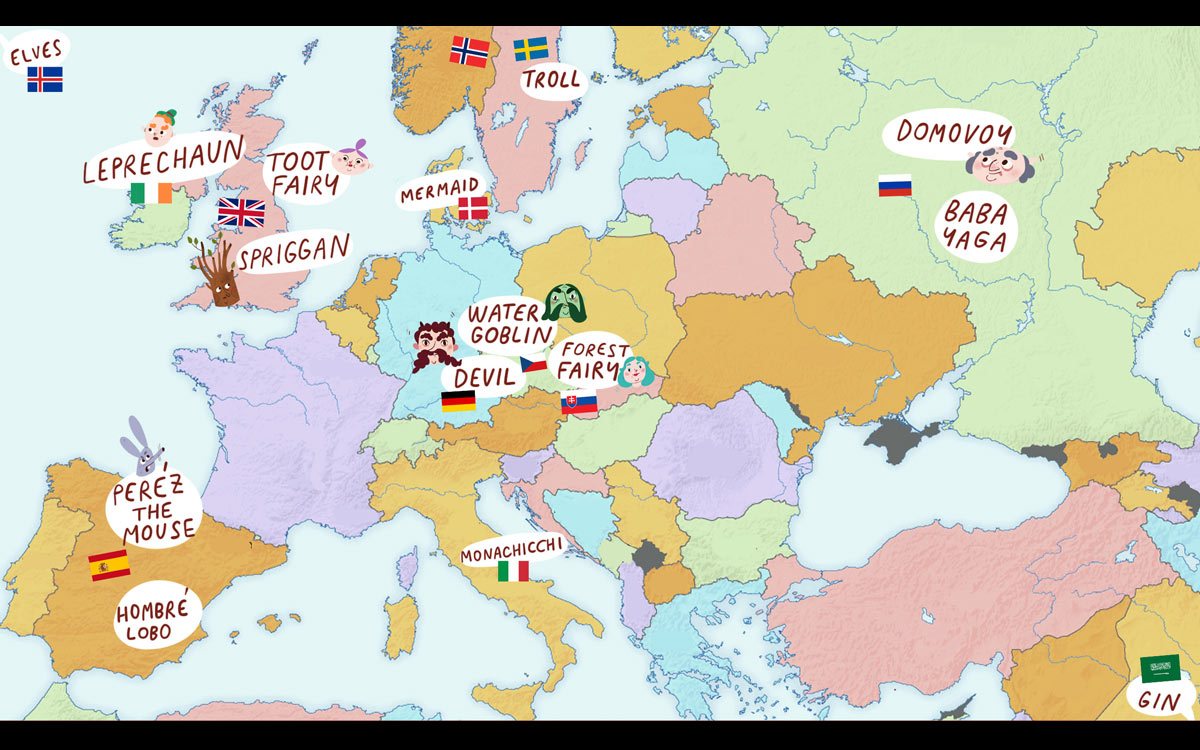
HN: How did the project start? And where did the initial idea of the story come from?
Alžběta Göbelová: The first thing is that we always wanted to do something together as a team. Gabriela and I are friends, we were studying animation together and sometimes helping with each other’s projects, back then and even now, and we liked the cooperation. So, we’ve decided to make a movie together.
We then brainstormed with a few of our ideas and chose one. That time it was really just an idea of making a fake interview with an old and useless forest fairy, who is complaining about modern society and how she is not an important part of it anymore. But by putting our heads together, it became bigger.
HN: What kind of message or experience do you want to deliver to the audience through the story?
Alžběta Göbelová: Mainly, as we already said, is to entertain the audience. It’s also to show them the beautiful fairy-tale folklore of different countries. To enlighten people about traditional characters from all over the world.
Every character in history had some purpose. The water goblin was there to scare kids from swimming alone, not to drown themselves. The forest fairy was a warning for young guys of being controlled by their sense of temptation. We have a feeling that people of today are slowly forgetting them and it is such a pity. It is not like we no longer need them. We do, maybe more than before, but probably they are not so cool anymore… So, what we want to say is that they can be, and they are cool, even in modern times.
HN: Could you please let us know the most important characteristic of the visual design of characters and the universe for the story, and why?
Gabriela Plačková: The series is aimed at kids 10+ and that is a very hard target audience to impress, especially with a stop-motion technique. Thus, we are developing a very fresh, modern, colorful and clean visual style for the series so it speaks to the kids and teenagers.
There is much that goes into developing the visuals, and we are still at the beginning, but we already know what we need to really focus on. Our character designs, for instance, need to be very well executed, so they stand out as individual characters representing their country of origin, however still fitting into the scope of all the other characters appearing in the series. The shapes, the materials, the way the puppet will be eventually built and animated, that all needs to be taken into consideration.
We also want to add personal visual elements unique to each country in the episodes representing them. We are talking color palettes, ornaments, shapes, and choice of clothing.
